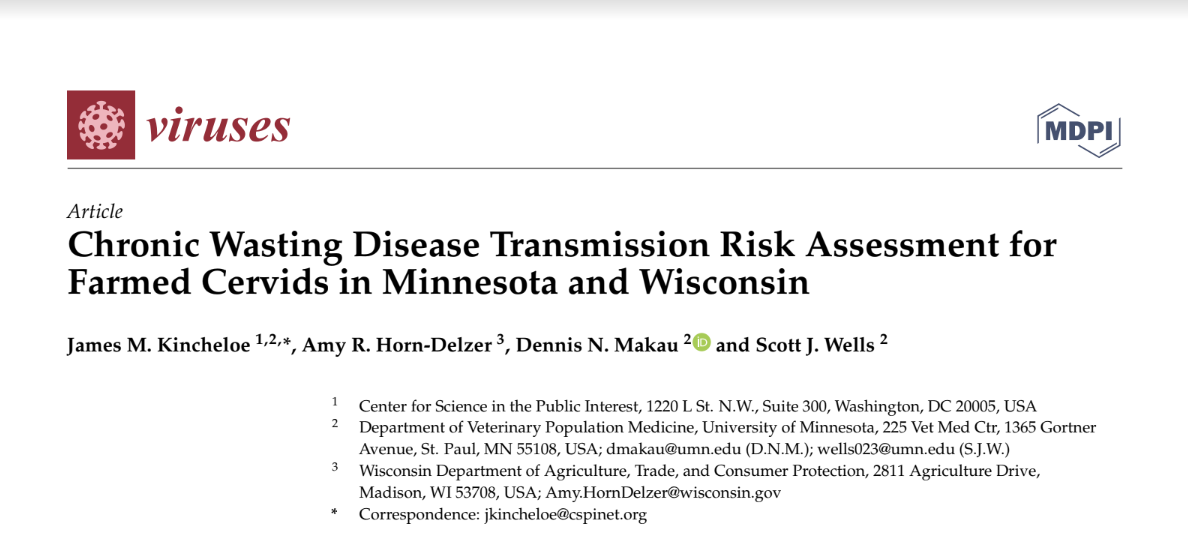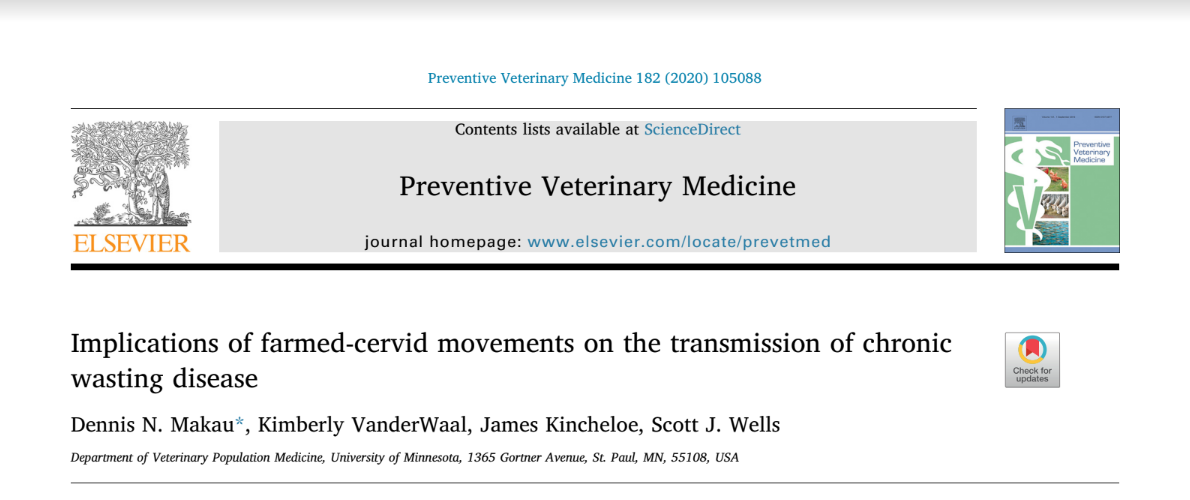
Identification of Farm and Environmental Factors associated with Chronic Wasting Disease (CWD) in Cervid Herd
This study looks to identify farm and environmental risk factors associated with CWD positive herds (cases) by comparing them to CWD non-detected herds (controls). We are trying to distinguish differences between the cases and controls in regards to herd management practices, surrounding land areas, and cervid movements. Then determining if these differences pose a risk of CWD transmission.
A questionnaire will be administered to herd producers to gather information about herd management practices. Data pertaining to herd demographics and cervids movements will be obtained from state databases. Surrounding land features using geographic information system (GIS) will allow us to analyze spatial and geographical data.
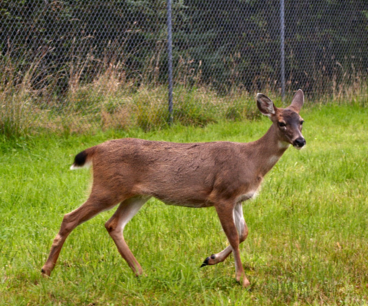
Study Impact
- The results of this study will identify key farm and environmental risk factors associated with CWD-positive herd status on cervid farms. Understanding these risk factors will improve CWD biosecurity measures in farmed cervids.
- We plan to deliver study results to farmed cervid industry leaders and state representatives. Access to the results will enhance their ability to use scientifically backed data to evaluate policies designed to protect herd and manage CWD.
- The findings from this study will be used to direct futures studies pertaining to CWD and farmed cervids.
Funded by USDA-APHIS through CWD Cooperative Agreement funding.
Download the pdf of this research document:
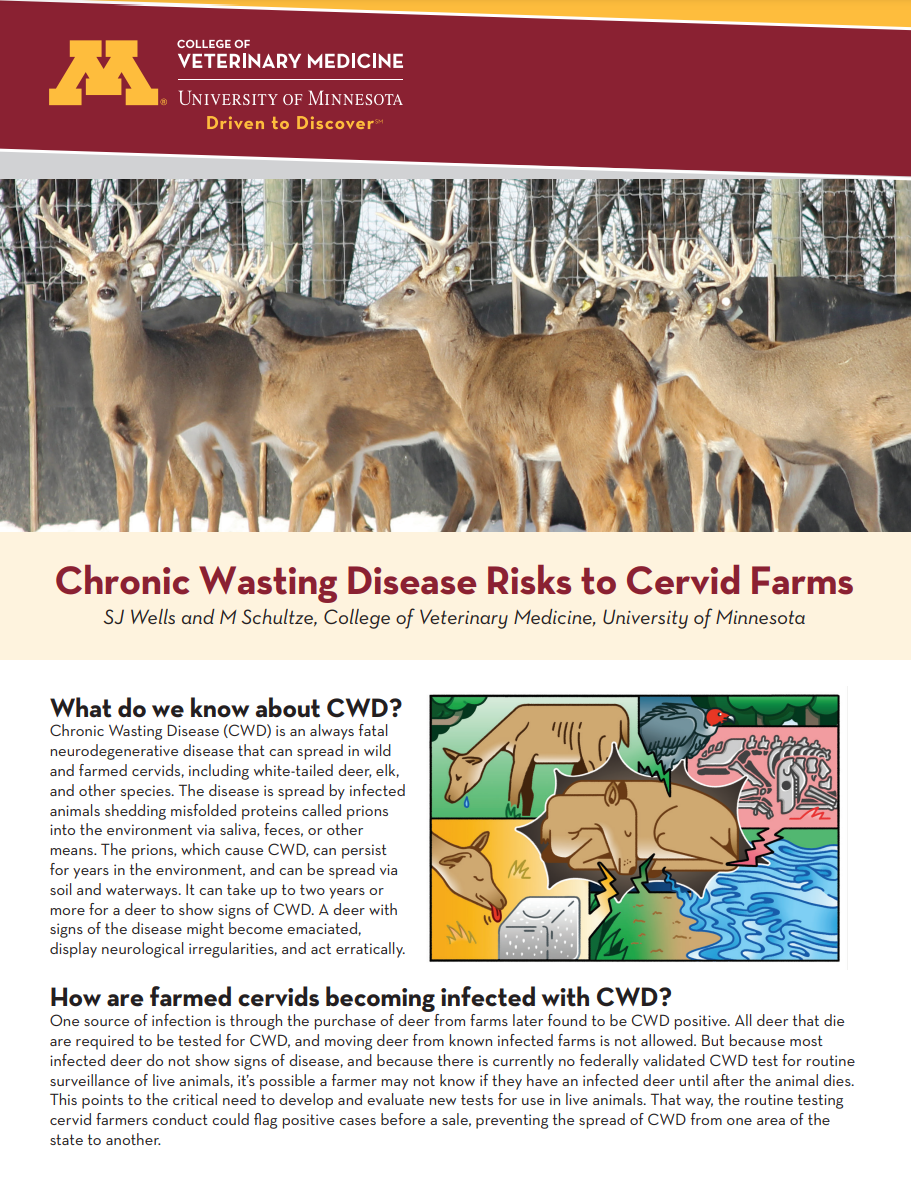
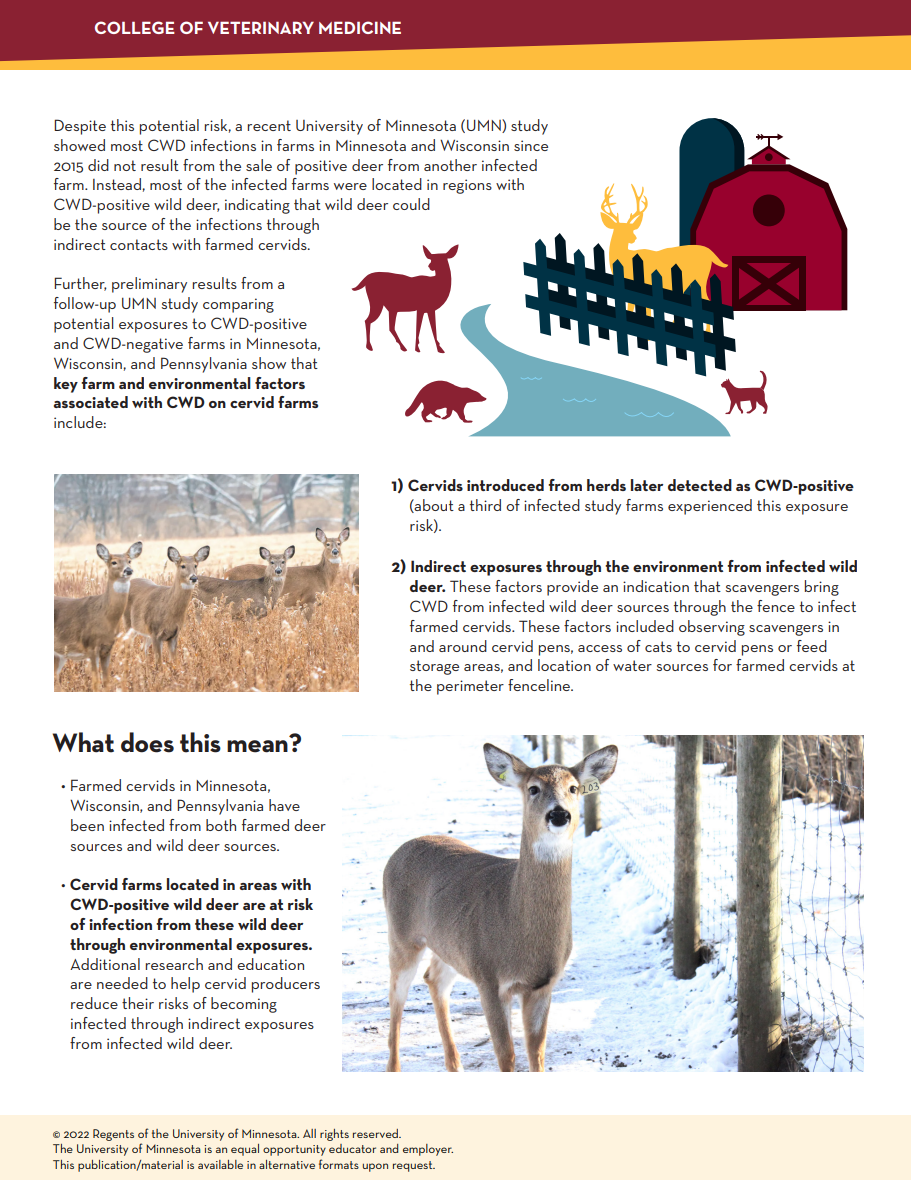
Recent Publications
Supporting research
1. Transmission of CWD to cervid farms can occur through direct and indirect pathways. One pathway is through direct contact with infected farmed or wild cervids. Indirect pathways includes contact with infected feed, environmental, scavengers, or carcasses (hunting or taxidermy). Lymphoid tissue, brain tissue, blood, urine, saliva, and feces have all been experimentally proven to transmit CWD prions. While CWD prion has been detected in other tissues such as pancreas, fat, cardiac muscle, and velvet, there is no present study to demonstrate these tissues can cause infection. They may play a role in environmental contamination and the detection of low infectivity numbers in environmental samples. Scavengers may also contribute to the spread of CWD as prions retain their infectivity after passing through gastrointestinal systems. All different transmission pathways were identified and assessed to determine their transmission risk (high, moderate, or negligible) and uncertainty (high or low). High transmission risks were the likely source of CWD in the majority of cases but many farms (including a higher proportion of recent cases) likely acquired CWD through moderate transmission risks. These moderate transmission risks are not as well understood and require further research.
Chronic Wasting Disease Transmission Risk Assessment for Farmed Cervids in Minnesota and Wisconsin.
James M. Kincheloe DVM, Amy R. Horn-Delzer DVM, Scott J. Wells DVM, PhD.
https://www.mdpi.com/1999-4915/13/8/1586
Funded by Minnesota Board of Animal Health
2. These long distance trade movements of cervids presents a risk for spread of CWD in Minnesota. The movement of cervids between farms is unpredictable from year to year potentially due to the inconsistent commercial relationship between farms. There is a lack of vertically integrated relationships within the farmed cervid industry compared to other established animal industries (poultry and swine) that could be contributing to these rare commercial relationships.
Implications of Farmed-cervid Movements on the Transmission of Chronic Wasting Disease.
Dennis N. Makau PhD, Kimberly VanderWaal PhD, James M. Kincheloe DVM, Scott J. Wells DVM, PhD. https://www.sciencedirect.com/science/article/abs/pii/S0167587720301537?via%3Dihub
Funded by Minnesota Board of Animal Health
3. There are multiple potential pathways of transmission to cervid farms, but identification of the most important pathways is unclear, which makes development of CWD biosecurity programs on-farm extremely challenging. This survey describes demographic characteristics and potential CWD exposure risks related to herd biosecurity practices used by cervid operations in CWD test negative farms in Minnesota. Results are currently being summarized and will be reported soon.
Funded by Minnesota Board of Animal Health
4. Continued spread of chronic wasting disease (CWD) poses an existential threat to cervid farms, indicating the critical need to better understand transmission. Our recent CWD study identified indirect transmission risks to farmed cervids through the farm perimeter fence. A key next step is to evaluate interactions between infected wild cervids and farmed cervids from wildlife activity near the perimeter fence. This project aligns with the APHIS priority ‘Improve the management of CWD-affected farmed cervid premises,’ by ‘controlling the spread of CWD from … (the) surrounding area by implementing or improving … scavenger management or other biosecurity measures.’
Assessment of the Ecology of Wildlife near the Perimeter Fence of Cervid Farms
